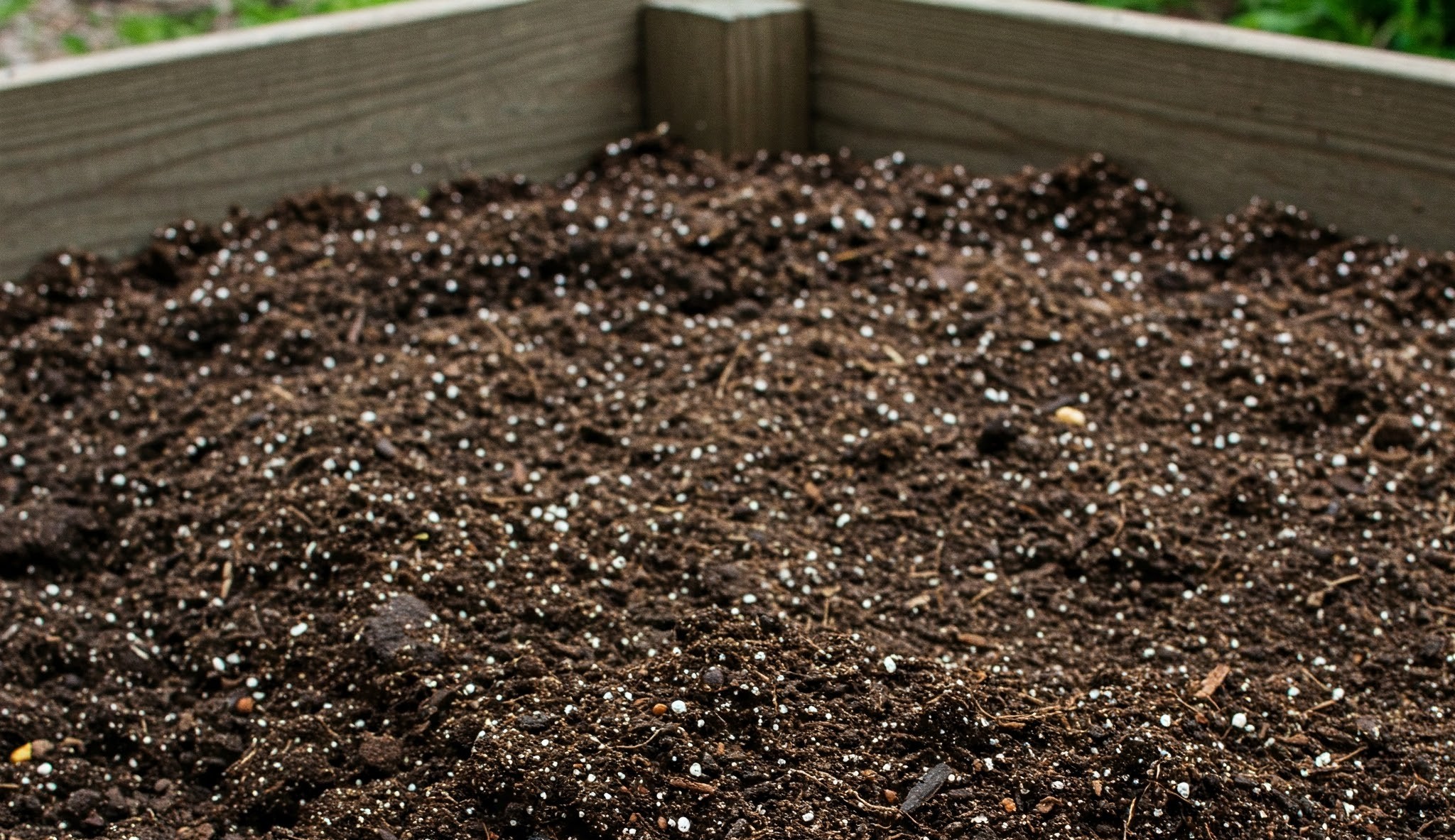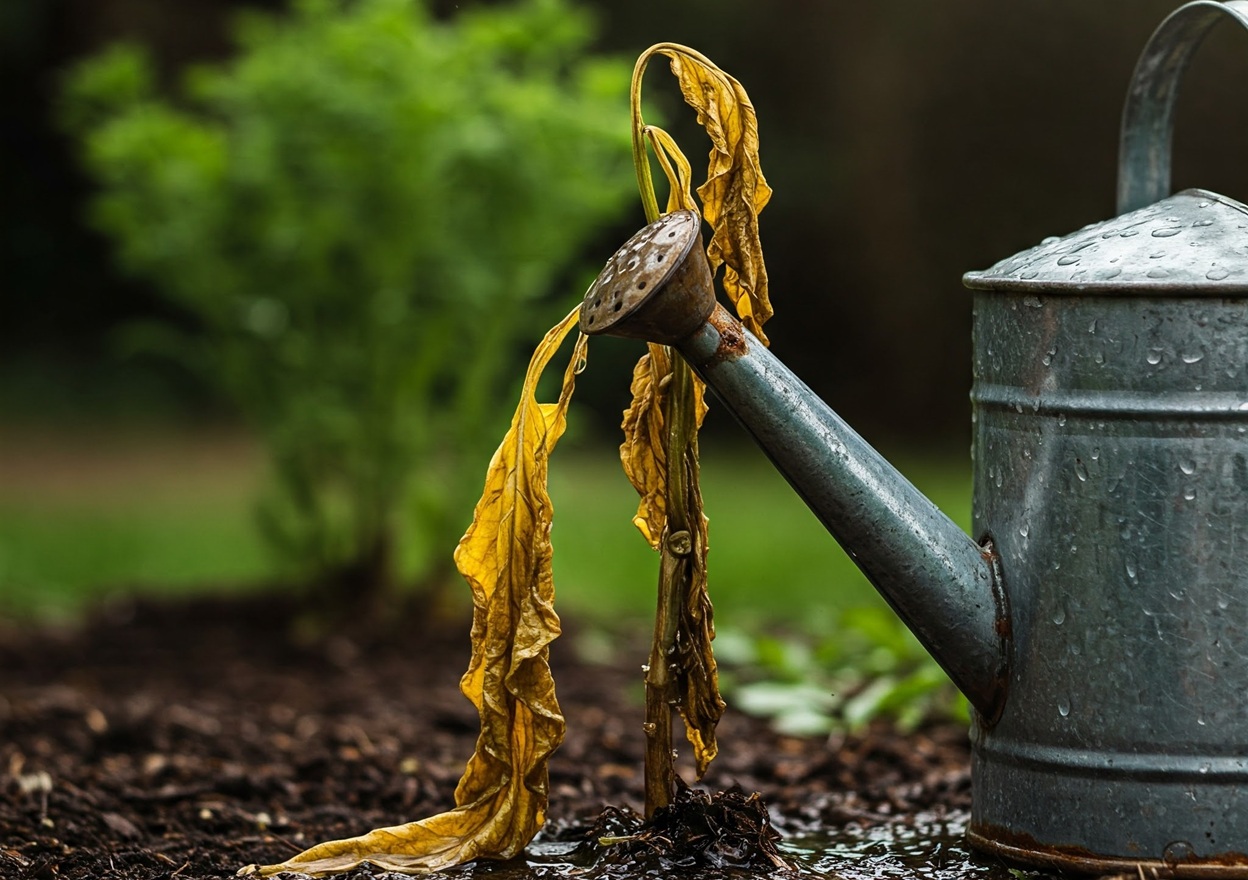10 Best Indoor Plants for Beginners and How to Care for Them
Indoor plants are plants that are grown indoors, typically in homes or offices, for decorative purposes, air purification, or both. They thrive in controlled environments with indirect sunlight and regular care, making them an ideal choice for bringing a touch of nature inside.
Indoor plants can turn any room into a vibrant and pleasant place. For beginners, picking the right plants is essential. The 10 best indoor plants are easy to care for, do well in low light, and clean the air. With the proper care, these plants will flourish, adding charm and freshness to your indoor space.
Key Takeaways
- The 10 best indoor plants are low-maintenance and perfect for beginners.
- These plants can improve air quality and boost mental well-being.
- Proper watering, light conditions, and occasional feeding keep them healthy.
- Overwatering is a common mistake to avoid.
1. Snake Plant (Sansevieria)

The Snake Plant, also called Sansevieria trifasciata, is a well-loved indoor plant because it’s easy to care for and has striking, upright leaves with yellow or white edges. It’s tough and can thrive in different indoor conditions, making it perfect for both beginners and experienced plant lovers.
Imagine having a plant that easily adapts to the dark corners of your living room or the bright windowsill in your kitchen. The Snake Plant is great for this. Even if you sometimes forget to water it, this plant will keep growing and add a touch of green to your home.
- Light: Snake Plants are very versatile when it comes to lighting. They can thrive in low-light conditions like dim corners or hallways, and they also do well in bright, indirect light near windows. This flexibility makes them suitable for almost any spot in your home without needing to worry too much about light requirements.
- Water: Snake Plants are forgiving with their watering needs. They only need to be watered every 2-3 weeks. It’s important to let the soil dry out completely between waterings to prevent root rot, which can happen if they are overwatered. This makes them perfect for those who may not have a regular watering schedule.
- Care Tips: Known as one of the most resilient houseplants, Snake Plants need minimal care. They are almost indestructible, making them ideal for beginners or those with a busy lifestyle who might not have much time for plant care. They can tolerate neglect, which is why they are such a popular choice.
- Air Purification: Snake Plants are not just beautiful; they are also great for your indoor environment. They can remove harmful toxins like formaldehyde and benzene from the air, according to a NASA Clean Air Study. This makes them an excellent choice for improving the air quality in your home.
- Health Benefits: Unlike most plants, Snake Plants release oxygen at night. This makes them a great addition to your bedroom as they help improve air quality while you sleep. They continuously purify the air, contributing to a better sleeping environment.
2. Pothos (Epipremnum aureum)

The Pothos, also known by its scientific name Epipremnum aureum, is a popular indoor plant famous for its easy care and fast growth. It’s characterized by its heart-shaped, glossy leaves that can trail or climb, adding a lush, green aesthetic to any space.
- Light: Pothos plants are incredibly adaptable and can grow well in a variety of lighting conditions. They thrive in low to bright indirect light, making them suitable for different spots in your home, whether it’s a dim hallway or a bright living room. However, they grow faster and maintain more vibrant leaves when they receive bright, indirect light.
- Water: Pothos plants are forgiving when it comes to watering. They only need to be watered every 1-2 weeks. The frequency can depend on the amount of light they get—the more light, the more water they may need. It’s important to let the soil dry out slightly between waterings to prevent root rot.
- Care Tips: Known for their hardiness, Pothos are perfect for beginners or those with a busy lifestyle. They are fast-growing, even in low light conditions, making them ideal for any indoor space. They can tolerate a bit of neglect, so even if you forget to water them occasionally, they will continue to thrive.
- Air Purification: Pothos are not just beautiful; they are also known for their air-purifying abilities. They can remove common household toxins like formaldehyde, benzene, and toluene from the air, contributing to a healthier indoor environment.
- Propagation: One of the great things about Pothos is how easy they are to propagate. You can cut a stem with a few leaves, place it in water, and watch it grow roots. This allows you to easily create new plants for other areas of your home or share them with friends.
- Versatility: Pothos can grow in water alone without any soil, making them versatile in how you choose to display them. They can also be trained to climb up trellises or allowed to trail from hanging baskets.
- Toxicity: While Pothos are beautiful, it’s important to note that they are toxic if ingested, so keep them out of reach of pets and small children.
3. Spider Plant (Chlorophytum comosum)

The Spider Plant, scientifically known as Chlorophytum comosum, is a very popular indoor plant that’s perfect for beginners. It’s known for its long, arching leaves that are green with white stripes, giving it a unique and attractive appearance.
- Light: Spider Plants thrive in indirect sunlight. This means they do well in bright, well-lit rooms but not in direct sunlight, which can scorch their leaves. They can also tolerate lower light levels, making them adaptable to different spots in your home.
- Water: These plants are easy to care for when it comes to watering. They should be watered once a week. It’s important to let the soil dry out a bit between waterings to prevent root rot, which can happen if the plant is overwatered.
- Care Tips: Spider Plants are highly resilient and can adapt to various conditions, making them an excellent choice for new plant parents. They can handle occasional neglect, so if you forget to water them once in a while, they will still be fine. They also produce little “baby” plants, or spiderettes, that can be easily propagated to grow new plants.
- Air Purification: Spider Plants are excellent at purifying the air. They can remove pollutants like formaldehyde and xylene from the air, contributing to a healthier indoor environment.
- Propagation: Spider Plants are easy to propagate. The spiderettes can be cut off and planted in soil or placed in water until roots develop, making it simple to create new plants.
- Pet-Friendly: Unlike some houseplants, Spider Plants are non-toxic to pets. So if you have curious cats or dogs, this plant is a safe choice for your home.
- Growth: Spider Plants grow quickly and can produce flowers in the right conditions, adding an extra touch of beauty to your home.
4. ZZ Plant (Zamioculcas zamiifolia)

The ZZ Plant, scientifically known as Zamioculcas zamiifolia, is a popular indoor plant that’s loved for its striking appearance and low maintenance. It features glossy, dark green leaves that add a touch of elegance to any room.
- Light: ZZ Plants are incredibly versatile when it comes to lighting. They can thrive in low light conditions, such as a dim corner of your home, as well as in bright, indirect light. This flexibility makes them suitable for almost any spot in your house, though they will grow more quickly in brighter light.
- Water: ZZ Plants are very drought-tolerant. They only need to be watered every 2-3 weeks. It’s important to let the soil dry out completely between waterings to prevent root rot, which is a common problem if they are overwatered. This infrequent watering schedule is ideal for people who may not have a routine or often forget to water their plants.
- Care Tips: One of the standout features of ZZ Plants is their ability to withstand neglect. They require minimal care, making them perfect for busy individuals or beginners who are just starting with indoor plants. Even if you forget about them for a while, they will continue to thrive.
- Air Purification: ZZ Plants are not just attractive; they also help purify the air. They can remove toxins like xylene, toluene, and benzene from the air, contributing to a healthier indoor environment.
- Toxicity: It’s important to note that ZZ Plants are toxic if ingested, so they should be kept out of reach of pets and small children.
- Resilience: ZZ Plants have rhizomes, which are thickened underground stems that store water. This makes them very resilient and able to survive long periods without water.
- Growth: Although they grow slowly, ZZ Plants can reach a height of up to 3-4 feet indoors, adding a significant green presence to your home.
- Origin: The ZZ Plant originates from Eastern Africa and has adapted well to indoor conditions worldwide, thanks to its hardy nature.
5. Peace Lily (Spathiphyllum)

The Peace Lily, scientifically known as Spathiphyllum, is a popular indoor plant cherished for its elegant appearance and air-purifying qualities. It features dark green leaves and stunning white flowers that resemble a lily, adding a touch of serenity to any room.
- Light: Peace Lilies thrive in low to bright indirect light. This means they do well in places with filtered light, like a spot near a window where the sun doesn’t shine directly on them. They can also tolerate low light conditions, making them perfect for offices or rooms with less natural light.
- Water: These plants prefer to be watered weekly. It’s essential to keep the soil consistently moist but not soggy. Overwatering can lead to root rot, so it’s a good practice to check that the top inch of soil is dry before watering again.
- Care Tips: Peace Lilies are known for their ability to purify the air. They can remove common household toxins such as formaldehyde, benzene, and trichloroethylene from the air, contributing to a healthier indoor environment. They thrive in low light conditions and are relatively easy to care for, making them ideal for beginners. Regularly wiping the leaves with a damp cloth will keep them dust-free and help them absorb more light.
- Air Purification: Peace Lilies are highly effective at cleaning the air, as confirmed by NASA’s Clean Air Study. They can improve indoor air quality by filtering out harmful chemicals.
- Flowering: The white blooms of the Peace Lily are not actually flowers but modified leaves called spathes. They can flower throughout the year with proper care.
- Humidity: Peace Lilies enjoy a bit of humidity, so misting their leaves occasionally or placing them in a more humid room like the bathroom can make them happier.
- Toxicity: While beautiful, Peace Lilies are toxic if ingested. They should be kept out of reach of pets and small children.
- Growth: These plants can grow up to 1-3 feet tall indoors, making them a substantial yet manageable addition to any indoor space.
6. Aloe Vera

Aloe Vera, known scientifically as Aloe barbadensis miller, is a popular indoor plant that is both easy to care for and packed with health benefits. This succulent is recognized by its thick, fleshy leaves that store water, making it a hardy plant that can survive in various conditions.
- Light: Aloe Vera plants thrive in bright indirect to direct light. This means they do well when placed near a window where they can get plenty of sunlight but are not exposed to harsh, direct rays for extended periods. A sunny spot is ideal for keeping your Aloe Vera happy.
- Water: One of the key aspects of Aloe Vera care is its watering schedule. These plants should be watered every 3 weeks, allowing the soil to dry out completely between waterings. Overwatering can lead to root rot, so it’s important to ensure the soil is dry before adding more water.
- Care Tips: Aloe Vera is a low-maintenance plant, making it perfect for beginners or those with a busy lifestyle. It’s very forgiving if you occasionally forget to water it. Just make sure it has plenty of light, and it will continue to thrive.
- Health Benefits: Aloe Vera is well-known for its soothing and healing properties. The gel inside its leaves is often used to treat minor burns, cuts, and skin irritations. It can also be used in beauty products for its moisturizing effects.
- Air Purification: Like many indoor plants, Aloe Vera helps to improve air quality by removing toxins such as formaldehyde and benzene from the air.
- Propagation: Aloe Vera produces offshoots, also known as “pups,” which can be separated from the main plant and repotted to grow new plants. This makes it easy to expand your Aloe Vera collection.
- Growth: Aloe Vera grows slowly but can reach up to 1-2 feet in height indoors, making it a substantial addition to your indoor plant collection.
- Origin: Aloe Vera originates from the Arabian Peninsula but has become popular worldwide due to its medicinal properties and ease of care.
7. Rubber Plant (Ficus elastica)

The Rubber Plant, scientifically known as Ficus elastica, is a popular indoor plant known for its large, glossy leaves and easy care requirements. It’s a great choice for those who want a striking and low-maintenance addition to their home.
- Light: Rubber Plants thrive in bright indirect light. This means they do well near a window where they can get plenty of sunlight, but it’s not directly on them. Direct sunlight for long periods can scorch their leaves, so it’s best to avoid that.
- Water: These plants need to be watered every 1-2 weeks. It’s important to let the soil dry out between waterings to prevent root rot. Overwatering can harm the plant, so checking the soil before watering is a good practice.
- Care Tips: Rubber Plants can grow quite large, reaching up to 6-10 feet tall indoors if given the right conditions. Despite their size, they are easy to care for. They adapt well to indoor conditions and can tolerate a bit of neglect, making them suitable for beginners or those with a busy lifestyle.
- Air Purification: Rubber Plants are not only attractive but also help purify the air. They can remove toxins like formaldehyde from the air, contributing to a healthier indoor environment.
- Growth: These plants can grow very large, but they can also be pruned to maintain a more manageable size. Pruning encourages new growth and helps shape the plant.
- Resilience: Rubber Plants are quite hardy and can adapt to various indoor conditions. They prefer humid environments, so occasional misting can be beneficial.
- Origin: Native to Southeast Asia, Rubber Plants have become a popular choice for indoor gardening worldwide due to their resilience and attractive foliage.
- Sap: The sap of the Rubber Plant contains latex, which was historically used to make rubber. However, the sap can be irritating to the skin, so it’s best to handle the plant with care.
8. Chinese Evergreen (Aglaonema)

The Chinese Evergreen, known scientifically as Aglaonema, is a popular indoor plant appreciated for its attractive foliage and ease of care. It has beautiful leaves that can be various shades of green, sometimes with silver or red markings, adding a vibrant touch to any indoor space.
- Light: Chinese Evergreens thrive in low to medium indirect light. This means they can do well in less sunny spots of your home, such as offices, bedrooms, or living rooms where direct sunlight is limited. They are versatile in handling various lighting conditions but grow best in moderate, indirect light.
- Water: These plants are relatively low-maintenance when it comes to watering. They only need to be watered every 2-3 weeks. It’s important to allow the soil to dry out between waterings to prevent root rot. Checking the top inch of the soil before watering again is a good practice.
- Care Tips: Chinese Evergreens are well-known for their tolerance to low light and infrequent watering, making them an excellent choice for beginners or those with a busy lifestyle. They can handle a bit of neglect and still thrive, which is why they are so popular.
- Air Purification: Chinese Evergreens help improve indoor air quality by filtering out common pollutants such as benzene and formaldehyde. This makes them a beneficial addition to your home.
- Origin: These plants originate from the tropical and subtropical regions of Asia, which contributes to their adaptability to different indoor conditions.
- Toxicity: While beautiful, Chinese Evergreens are toxic if ingested, so they should be kept out of reach of pets and small children.
- Growth: They grow slowly but can reach up to 2-3 feet tall indoors, making them a manageable size for most indoor spaces.
- Varieties: There are numerous varieties of Chinese Evergreens, each with unique leaf patterns and colors. This variety makes them a versatile choice for different aesthetic preferences.
9. Boston Fern (Nephrolepis exaltata)

The Boston Fern, scientifically known as Nephrolepis exaltata, is a popular indoor plant admired for its lush, arching fronds. It’s a fantastic choice for adding a touch of greenery and elegance to any space.
- Light: Boston Ferns thrive in indirect light. They do well in bright rooms with filtered sunlight, but direct sunlight can scorch their delicate fronds. Placing them in spots where they receive plenty of indirect light, such as near windows with sheer curtains, is ideal.
- Water: These ferns need to be watered weekly. The key to their health is keeping the soil consistently moist but not waterlogged. Make sure the top inch of soil is slightly dry before watering again to avoid root rot.
- Care Tips: Boston Ferns prefer humid environments, making them perfect for bathrooms or kitchens where humidity levels are naturally higher. If your home is dry, especially during the winter months, misting the ferns or using a humidity tray can help keep them happy.
- Air Purification: Boston Ferns are excellent at purifying the air. They can remove toxins such as formaldehyde and xylene, which contributes to a healthier indoor environment.
- Humidity: These ferns thrive in high humidity. They are native to tropical rainforests, which explains their preference for moist, humid conditions.
- Growth: Boston Ferns can grow quite large, with fronds reaching up to 2-3 feet long. This makes them a substantial and attractive addition to any indoor space.
- Non-Toxic: Unlike some houseplants, Boston Ferns are non-toxic to pets, making them a safe choice for households with cats and dogs.
- Maintenance: Regularly trimming dead or yellowing fronds helps keep the plant looking its best and encourages new growth.
10. Jade Plant (Crassula ovata)

The Jade Plant, scientifically known as Crassula ovata, is a popular indoor plant recognized for its thick, fleshy leaves and easy-to-care-for nature. It is often considered a symbol of prosperity and good luck, making it a common gift for new business owners or homeowners.
- Light: Jade Plants thrive in bright, indirect sunlight. They do well when placed near a window that gets plenty of light but not direct sunlight all day. This positioning helps them grow strong and healthy.
- Water: One of the key features of Jade Plants is their ability to store water in their thick leaves. This means they don’t need to be watered frequently. It’s best to water them when the top inch of soil feels dry, which typically means every 2-3 weeks. Overwatering can lead to root rot, so it’s crucial to let the soil dry out between waterings.
- Care Tips: Jade Plants are quite low-maintenance and can tolerate a bit of neglect, making them perfect for busy individuals or beginners. They are also known to bring good luck and prosperity, which adds to their appeal. Occasionally wiping their leaves helps them absorb more light and keeps them looking vibrant.
- Growth: Jade Plants grow slowly but can become quite large over time. They can reach up to 3-6 feet tall indoors, adding a substantial presence to your home.
- Propagation: These plants are easy to propagate. Simply cut a healthy leaf or stem, let it dry for a few days, and then plant it in the soil. This makes it easy to expand your collection or share plants with friends.
- Air Purification: While they are primarily known for their aesthetic and symbolic value, Jade Plants also help purify the air, though not as effectively as some other houseplants.
- Origin: Native to South Africa and Mozambique, Jade Plants are well-suited to indoor environments worldwide due to their adaptability and resilience.
- Temperature: They prefer moderate temperatures and can be sensitive to cold. Keeping them in a stable indoor environment is key to their health.
Comparison Table of the 10 Best Indoor Plants
| Plant Name | Light Requirement | Watering Frequency | Special Features |
|---|---|---|---|
| Snake Plant | Low to bright light | Every 2-3 weeks | Air-purifying, resilient |
| Pothos | Low to bright indirect | When soil is dry | Fast-growing, easy care |
| Spider Plant | Low to bright indirect | Weekly | Non-toxic, air-purifier |
| ZZ Plant | Low to bright indirect | Every 2-3 weeks | Drought-tolerant |
| Peace Lily | Medium to low light | Weekly | Air-purifying, beautiful blooms |
| Aloe Vera | Bright indirect | When soil is dry | Medicinal uses |
| Rubber Plant | Indirect sunlight | Every 1-2 weeks | Low-maintenance, grows tall |
| Chinese Evergreen | Low light | Occasionally | Colorful foliage |
| Boston Fern | Indirect, humid | Frequent misting | Perfect for bathrooms |
| Jade Plant | Bright indirect | When soil is dry | Brings prosperity |
FAQs
Q1: Which indoor plant requires the least maintenance? A: The ZZ Plant and Snake Plant require the least maintenance as they tolerate neglect and low light.
Q2: How often should I water my indoor plants? A: Watering frequency varies. Most of the 10 best indoor plants need watering only when the soil is dry.
Q3: Can indoor plants survive without sunlight? A: Some plants like Snake Plant, ZZ Plant, and Chinese Evergreen thrive in low light conditions.
Q4: Which indoor plant improves air quality the most? A: The Peace Lily, Snake Plant, and Spider Plant are known for their air-purifying abilities.
Q5: Are all these plants safe for pets? A: While Spider Plant is pet-friendly, others like Peace Lily and Rubber Plant can be toxic to pets.
Conclusion
Starting your indoor plant journey doesn’t have to be overwhelming. The 10 best indoor plants are easy to care for, enhance home aesthetics, and improve air quality. Whether you choose a hardy Snake Plant, an elegant Peace Lily, or a charming Boston Fern, these plants will bring life to your space. With proper care, they will thrive and reward you with beauty and benefits.
Recommended Products:

I’m John Doe, a Certified Master Gardener with over 20 years of hands-on experience in cultivating healthy and vibrant gardens. My expertise spans organic gardening, soil science, and sustainable pest control. I’ve worked extensively with community gardens and have a deep passion for sharing my knowledge to help others succeed in their gardening endeavors.







